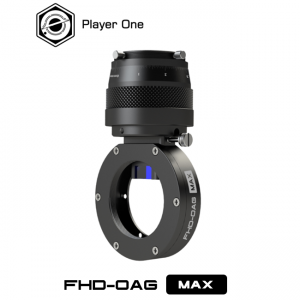New APM Binoculars have introduced by offering a variety of options for astronomical and terrestrial observing. These include the APM 40 x 110 ED binoculars, APM 34 x 80 ED binoculars and the APM Marine Binoculars 7×50 with Integrated Compass. These glasses are are robust and splash-proof, climate resistant, versatile and offer unique optical performance.
APM 40 x 110 ED Binoculars
Among the new APM Binoculars are the APM 40 x 110 ED binos which are indispensable wherever the smallest details have to be recognized in detail from a great distance. With the APM 40 x 110 ED, you will experience unforgettable moments, immerse yourself in the diversity and beauty of nature. Equipped with the impressively sharp wide-angle eyepiece, distant galaxies, moon, planets or star clusters are open to the observer.
The new top optics guarantees a true-to-life color rendition. The use of special ED objectives (FCD1 from Hoya Japan) significantly reduces color dispersion. ED stands for “Extra-low Dispersion Glass” and describes special lenses that are essential for the significant correction of the color aberration. The combination with APM broadband coating generates the highest optical performance in color reproduction and image quality.
High magnification optics necessitate the use of tripods. The APM 40 x 110 ED has a standardized tripod mount so that commercially available tripods can be used. This provides the APM 40 x 110 ED with the right stand for every application. The housing is made of a special magnesium alloy, is waterproof and filled with nitrogen and a transport case is included.
 The APM 40 x 110 ED Binoculars specifications include:
The APM 40 x 110 ED Binoculars specifications include:
– Interpupillary distance: 56 mm – 74 mm
– Diopter compensation: +/- 5 diopters
– Exit pupil: 2.75 mm
– Focusing: Individual eyepiece focus
– Magnification: 40 x
– Photo tripod thread: 1/4 Inch
– Front lens diameter: 110 mm
– Subjective angle of view: 64°
– Coating: All optical surfaces fully broadband multicoated
– Housing: Magnesium, nitrogen-filled
– Waterproof: Yes, nitrogen filled
– Aperture: 2-element ED APO objectives
– Eye relief: 16.5mm
– Coating: FMC
– Objective angle of view: 1.6°
– Field of view at 1000m: 28 m
– Field of view at 1000 yds: 85 ft
– Dimensions: 520 mm x 270 mm x 120 mm
– Weight: 5600 g
– Focal length: 540 mm
– Close focusing distance: 100 m
APM 34 x 80 ED Binoculars
The APM 34 x 80 ED binoculars offer all around big performance. Wildlife observation in the wild become a special experience with these large binoculars. With the APM 34 x 80 ED, you will experience unforgettable moments, immerse yourself in the diversity and beauty of nature up close. As with the APM 40 x 110 ED, the APM 34 x 80 ED are equipped with sharp wide-angle eyepieces providing excellent astronomical views.
The ED objectives (FK61) significantly reduce color dispersion and with APM broadband coating the APM 34 x 80 ED binoculars provide excellent seeing. The APM 34 x 80 ED has a standardized tripod mount so that commercially available tripods can be used. The housing is made of aluminum alloy, is waterproof and filled with nitrogen and includes a transport case.
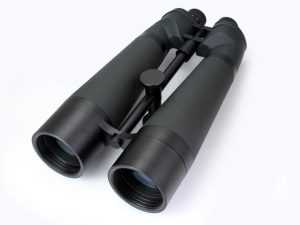 The APM 34 x 80 ED Binoculars specifications include:
The APM 34 x 80 ED Binoculars specifications include:
– Interpupillary distance: 56 mm – 74 mm
– Diopter compensation: +/- 5 diopters
– Focusing: Individual eyepiece focus
– Front lens diameter: 80 mm
– Photo tripod thread: 1/4 Inch
– Coating: All optical surfaces fully broadband multicoated
– Housing: Magnesium, nitrogen-filled
– Waterproof: Yes, nitrogen filled
– Aperture: 2-element ED APO objectives
– Coating: FMC
– Magnification: 34x
– Exit pupil: 2.35mm
– Eye relief: 17.8mm
– Objective angle of view: 2.1°
– Dimensions: 460*250*100mm
– Weight: 4576g
– Field of view at 1000m: 37 m
– Field of view at 1000 yds: 111 ft
– Luminosity: 5.52
– Twilight factor: 52.81
– Focal length: 450 mm
– Subjective angle of view: 68.8°
APM Marine Binoculars 7×50 with Integrated Compass
These high-quality, high-tech binoculars offer an integrated graticule and a compass that shows exactly in which direction you are looking. Distances and sizes can be determined in this way and they offer easily readable scales even at night.
For nature and astronomical observation, the APM Marine Binoculars 7×50 offer great performance providing the ability to calculate the height of mountains, transmission towers and wind turbines, as well as determine direction and distance to the next waymark. Even into twilight, the 50 mm objectives provide enough light for beautiful viewing. These are great binoculars for water sports, navigation, hunting and daytime adventures in nature as well as for astronomy.
The binoculars are nitrogen-filled and O-ring sealed for 100% waterproof and fog-free performance. The all-metal construction with rubber armoring ensures a secure grip and high durability. A special prism design ensures optimum optical quality. The binoculars offer more than 95% light transmission through their full wideband optics with multi-coatings and the flat field, distortion-free, high-resolution optics are uniformly sharp from center to edge.
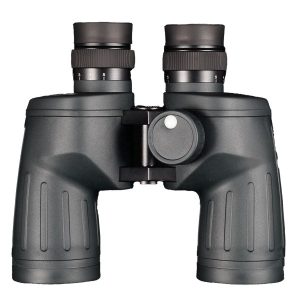 The APM Marine Binoculars 7×50 specifications include:
The APM Marine Binoculars 7×50 specifications include:
– Front lens diameter: 50 mm
– Magnification: 7 x
– Close focusing distance: 5 m
– Field of view at 1000m: 131 m
– Prism system: BAK 4 Prism
– Objective angle of view: 7.5°
– Luminosity: 51
– Exit pupil: 7.14 mm
– Field of view at 1000 yds: 393 ft
– Coating: FMC
– Subjective angle of view: 53°
– Eye relief: 56mm – 74mm
– Interpupillary distance: 23mm
– Waterproof: Yes, nitrogen filled
– Dimensions: 202mm x 215mm
– Weight: 1380g
– Housing: Magnesium Alloy Chassis
You can learn more about these new APM Binoculars here.
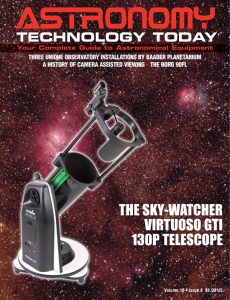
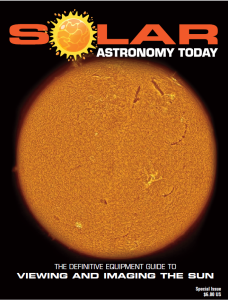 And to make it easier for you to get the most extensive news, articles and reviews that are only available in the magazine pages of Astronomy Technology Today, we are offering a 1-year magazine subscription for only $6! Or, for an even better deal, we are offering 2 years for only $9. Click here to get these deals which only will be available for a very limited time. You can also check out a free sample issue here.
And to make it easier for you to get the most extensive news, articles and reviews that are only available in the magazine pages of Astronomy Technology Today, we are offering a 1-year magazine subscription for only $6! Or, for an even better deal, we are offering 2 years for only $9. Click here to get these deals which only will be available for a very limited time. You can also check out a free sample issue here.
The sun is more active than it has been in years! If you’d like to learn more the technology behind solar observing, solar imaging and more, you can check out our free publication, “The Definitive Guide to Viewing and Imaging the Sun”. You don’t have to sign up or provide any information, simply click here and enjoy reading!



